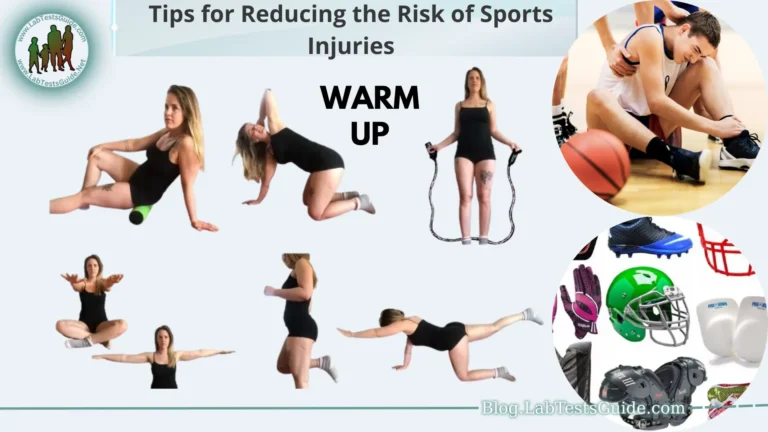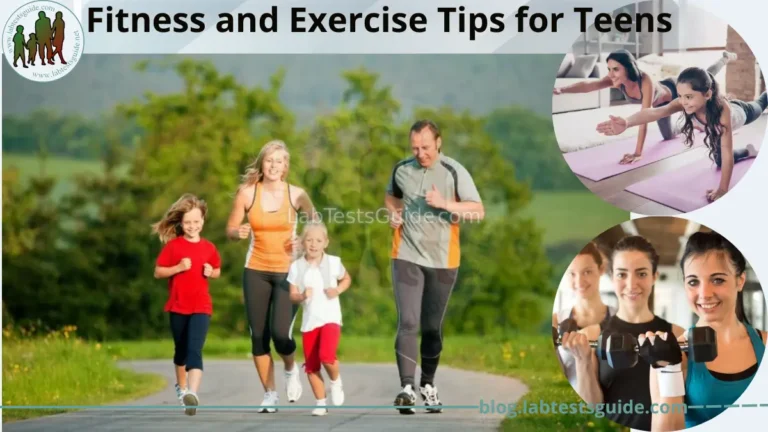Sports injuries are common among adolescents who participate in sports activities. These injuries can range from minor sprains and strains to more serious injuries such as fractures and concussions. Injuries not only have a physical impact, but can also affect a person’s mental and emotional well-being. That’s why it’s important to take preventative steps to reduce the risk of injury and promote a safe and healthy environment for teens who play sports.

Importance of sports injuries prevention for teens:
The prevention of sports injuries in teens is essential for several reasons.
- Avoiding Long-Term Effects: Sports injuries can have long-term effects on the health and well-being of teens. For example, a concussion can lead to long-term cognitive impairments, while a knee injury can cause chronic pain and disability later in life. Preventing injuries in the first place can help avoid these long-term consequences.
- Maintaining Physical Activity: Sports injuries can also prevent teens from participating in sports, leading to a decrease in physical activity levels. This reduction in activity can have negative effects on overall health and can increase the risk of obesity and other chronic diseases.
- Emotional Impact: Sports injuries can also have a significant emotional impact on teens. Injuries can cause pain, frustration, and disappointment, which can lead to anxiety and depression. Preventing injuries can help avoid these negative emotional consequences.
- Financial Impact: Finally, sports injuries can also have a significant financial impact on families. Medical bills and the cost of rehabilitation can add up quickly, leading to financial strain. Prevention strategies can help avoid these costs and potential financial stress.
Overall, preventing sports injuries in teens is critical for maintaining physical and emotional health, avoiding long-term consequences, and minimizing financial strain.
Common Sports Injuries in Teens:
There are some common sports injuries that can occur in teens.
- Sprains and Strains: As mentioned earlier, sprains and strains are common injuries in sports that involve sudden movements or changes in direction. These injuries can range from mild to severe, and may require rest, ice, compression, and elevation to treat.
- Concussions: Concussions are a type of traumatic brain injury that can occur when the head is hit or jolted. Symptoms may include headache, dizziness, nausea, and confusion. It is important to seek medical attention if a concussion is suspected, as repeated concussions can have serious long-term effects.
- Fractures: Fractures can occur in any bone, but are most common in the arms, legs, and feet. These injuries can result from falls, collisions, or overuse. Treatment may involve immobilization, rest, and physical therapy.
- Heat-Related Illness: Heat-related illnesses can occur when the body overheats, such as in sports played in hot and humid conditions. Symptoms may include fatigue, dizziness, nausea, and cramps. Prevention strategies include staying hydrated, taking breaks in shaded areas, and wearing lightweight, breathable clothing.
- Overuse Injuries: Overuse injuries occur when a particular body part is subjected to repetitive stress over an extended period. These injuries can result from activities such as running, jumping, or throwing. Treatment may involve rest, physical therapy, and modifying training or technique.
It’s important for parents, coaches, and teens themselves to be aware of these common sports injuries and take steps to prevent them from occurring. This may include proper warm-up and cool-down, using proper equipment and safety gear, strengthening and conditioning, staying hydrated, and resting and recovering when needed.
Prevention Strategies for Sports Injuries:
There are several strategies that can help prevent sports injuries in teens.
- Proper Warm-up and Cool-Down: A proper warm-up before exercise can help prepare the body for activity and reduce the risk of injury. A cool-down after exercise can also help the body recover and prevent injury.
- Use Proper Equipment and Safety Gear: Using the appropriate equipment and safety gear for a specific sport can help prevent injuries. This may include helmets, pads, mouthguards, and proper shoes.
- Strengthening and Conditioning: Strengthening and conditioning exercises can help improve overall fitness and reduce the risk of injury. This may include exercises that target specific muscles used in a particular sport.
- Technique and Form: Proper technique and form can help reduce the risk of injury. Coaches and trainers should ensure that athletes are using correct technique and form when performing sports-specific movements.
- Rest and Recovery: Adequate rest and recovery are essential for preventing overuse injuries. Athletes should take regular breaks and have rest days to allow the body to recover.
- Hydration: Staying hydrated before, during, and after exercise is important for preventing heat-related illnesses and ensuring that the body is functioning properly.
- Listen to Your Body: Athletes should pay attention to their body and any signs of pain or discomfort. Pushing through pain can increase the risk of injury, so it’s important to rest and seek medical attention if necessary.
By following these prevention strategies, parents, coaches, and athletes can help reduce the risk of sports injuries and keep teens healthy and active.
Importance of Early Detection and Treatment:
- Faster Recovery: Early detection and treatment can help athletes recover from injuries more quickly, allowing them to return to their sport sooner.
- Preventing Further Damage: Ignoring or delaying treatment for an injury can lead to further damage, making the injury more severe and prolonging recovery time.
- Long-term Health: Early treatment can help prevent long-term complications, such as chronic pain or joint problems.
- Mental Health: Sports injuries can have a significant impact on an athlete’s mental health, leading to feelings of frustration, anxiety, or depression. Early detection and treatment can help athletes manage these feelings and stay positive during recovery.
- Performance: Effective treatment of injuries can help athletes regain strength, flexibility, and range of motion, allowing them to perform at their best.
It’s important for parents, coaches, and athletes to be aware of the signs and symptoms of sports injuries and seek medical attention if necessary. Even minor injuries can have a significant impact on an athlete’s health and performance, so it’s better to err on the side of caution and seek treatment early.
Conclusion:
Sports injuries can be a common occurrence for teens who participate in sports and physical activity. However, with proper prevention strategies and early detection and treatment, the risk of injury can be significantly reduced. Parents, coaches, and athletes should be aware of the common sports injuries in teens and take steps to prevent them through proper warm-up, conditioning, use of proper equipment and safety gear, and rest and recovery. They should also be familiar with the signs and symptoms of sports injuries and seek medical attention early if necessary. By taking these steps, teens can stay healthy and active and continue to enjoy the benefits of sports and physical activity for years to come.






